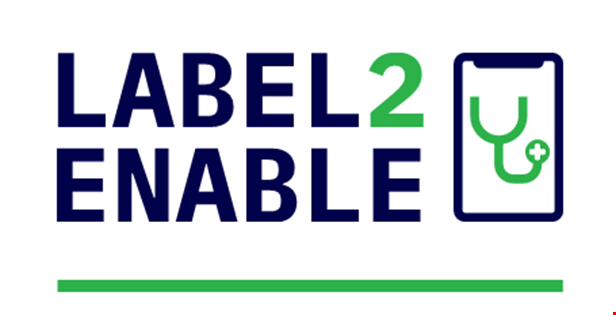Label2Enable

Basic project information
- Full title: Label2Enable
- Duration: 24 Months (May 2022 – May 2024)
- Status: Ongoing
- Funding programme: Horizon Europe – the European Union Framework Programme for Research and Innovation (Grant Agreement ID: 101057522).
What will the project do?
- Label2Enable aims to promote the ISO/TS 82304-2 health app assessment framework and label to support the development and implementation of an EU quality label for health and wellness apps.
- Label2Enable will leverage the globally endorsed ISO/TS 82304-2, and will convert it into an EU assessment and EU mHealth label, which will be embedded within the approval and reimbursement processes of various EU countries.
- The project also aims to foster cross-country alignment on these processes.
What is the ISO/TS 82304-2?
- The ISO/TS 82304-2 is a framework drafted by the International Organization for Standardization, an organisation that develops and publishes international standards.
- The ISO is an independent, non-governmental international organization with a membership of 167 national standards bodies.
- The ISO/TS 82304-2 standards define good quality requirements for health and wellness apps, and defines a quality label to visualise the quality and reliability of the apps.
What are the expected outcomes?
- Label2Enable expects to achieve TRUST, USE, and ADOPTION of an EU quality label for health apps.
- TRUST – achieve trust by creating an EU certification scheme for apps that is consistently used
- USE – achieve use by providing health app quality reports that support health professionals and insurers to recommend apps and make decisions on reimbursements; achieve use by enabling patients, citizens, and carers to use and trust the label when considering using health apps; achieve use by encouraging app stores, or other services that offer health apps, to publish the label with the apps
- ADOPTION – achieve the adoption of the label across countries by making it widely recognised. Achieving recognition through advocacy, mass communication, and targeted stakeholder engagement, and by making the app assessments affordable.
- Ultimately, Label2Enable aims to create a sustainable non-profit entity to maintain the labelling scheme, accredit app assessors, and promote the technical standard after the project.
What is EPFs’ role?
- EPF’s primary contribution to Label2Enable is focused on engaging Patients, Citizens, and Carers.
- Within this focus, EPF leads the work on enabling patients, citizens, and carers to make more use of trusted mHealth solutions for promoting their health and self-managing their health needs.
- To achieve this, we will set up an inclusive pan-EU engagement strategy to make sure that the label is useful and impactful, and establish a patient, citizen, and carer advisory group.
- The work of this advisory group will be central to:
- Testing the label across Europe
- Raising awareness among key groups on the app recommendations and certification
- Supporting decision making on the apps labels, allowing us to advocate to decision-makers and app stores
- Co-creating communication on the label, which will ensure that the label is widely understood and ultimately, adopted.
Why does this matter for patients?
- Health applications (health apps) have a huge potential for health and care systems and patients.
- For example, apps embedded into a persons’ care can help to promote a healthier lifestyle, provide more disease insight, lessen symptom burden, lessen hospital admissions, increase efficiency in care, and have been linked to longer lifetimes for users.
- Apps can also support patients in their own condition self-management, and even in prevention.
- However, those that use the apps or recommend them currently lack the information they need to determine the quality and reliability of these apps; at the same time, app creators face complex challenges to get their apps approved by national bodies.
- Label2Enable aims to provide a solution for both of these challenges – and in doing so, creating a trusted and recognisable system that reduces the burden on health systems, and hands back some of the control to patients.
- This can support patients to play bigger roles in their own care, empower them to manage their conditions via trustworthy tools, and encourage the use of trusted apps to encourage a healthier lifestyle and promote prevention.
The consortium:
- The consortium is composed of 14 partners from 7 countries – Belgium, Croatia, Germany, Italy, Lithuania, the Netherlands, and Spain.
- Academisch Ziekenhuis Leiden - Leiden University Medical Center
- The European Institute For Innovation Through Health Data - I-Hd
- Orcha Health Bv
- European Patients Forum
- Empirica Gesellschaft Fur Kommunikations Und Technologieforschung Mbh - Empirica
- Comite Europeen De Coordination Des Industries Radiologiques Electromedicales Et D Informatique De Sante Aisbl - Cocir
- Himss Europe Gmbh
- EIT Health Ev
- Universiteit Van Amsterdam - Uva
- Eurohealthnet Asbl
- Fundacio Ticsalut
- Optimit Doo
- Istituto Superiore Di Sanita
- Lietuvos Sveikatos Mokslu Universiteto Ligonine Kauno Klinikos
Related Information
Follow Label2Enable on
